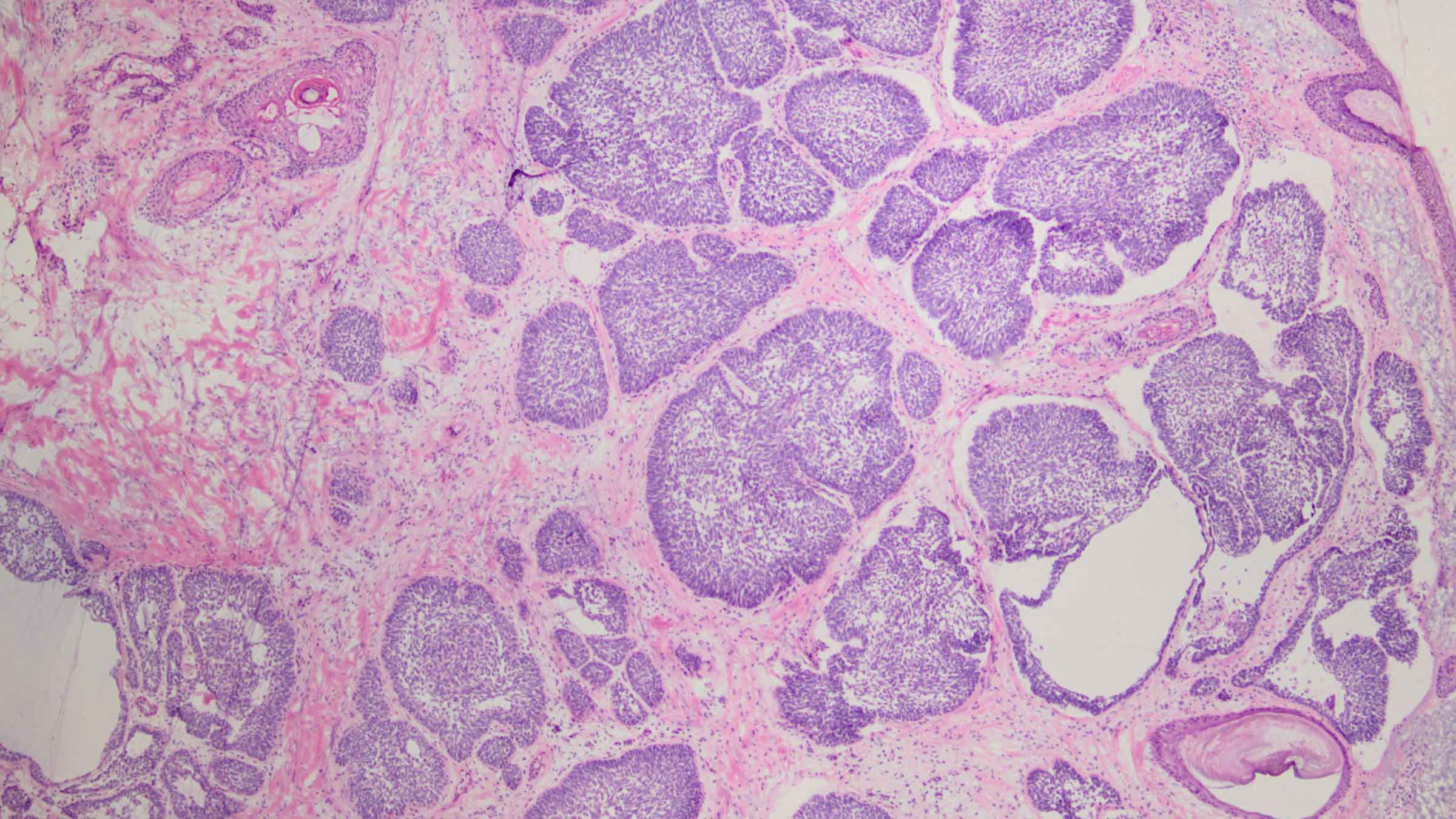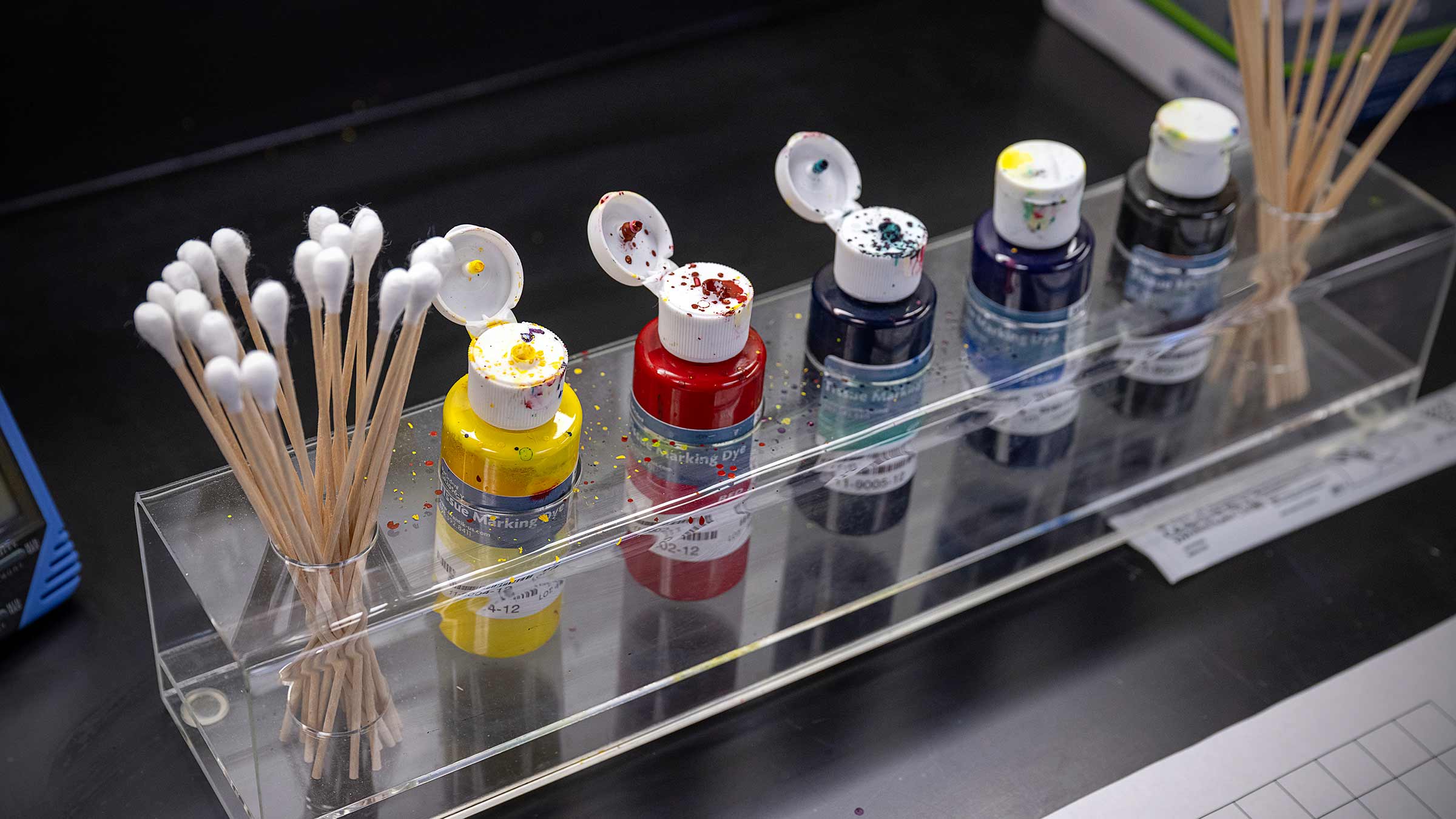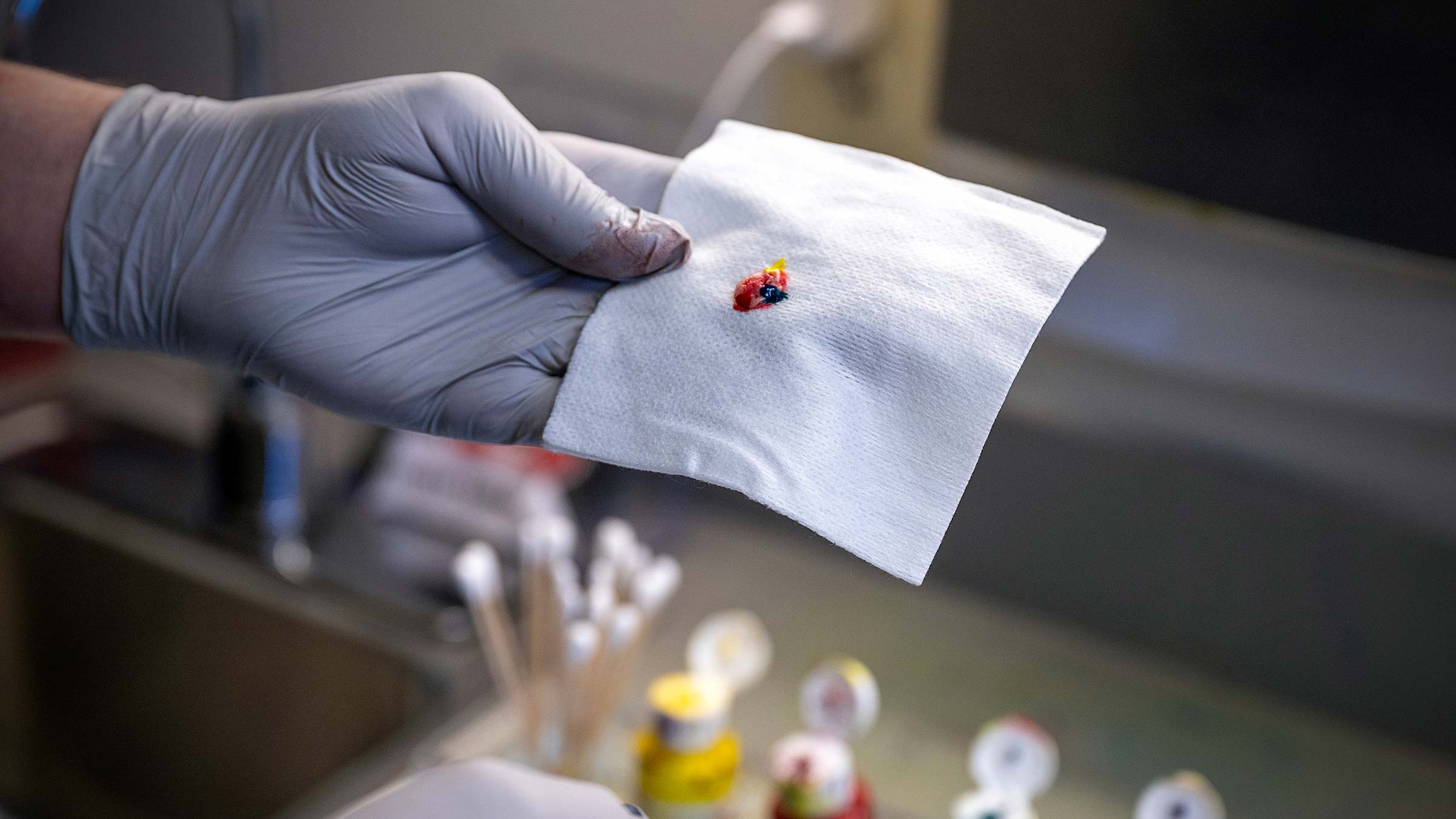How Mohs surgery leads to impressive cure rates for skin cancer
Dermatologist David Carr, MD, MPH, blends skill and artistry to give more patients a healthy future after skin cancer.
Beneath the steady glow of an overhead light, David Carr, MD, MPH, meticulously removes a cancerous swath of skin from John Komives’ left cheek.
“We cut a disk of skin that includes the spot and a small margin of skin for safety,” Dr. Carr says.
A tray of ink colors and cotton swabs are arranged on a nearby countertop.
Dr. Carr, a dermatologist at The Ohio State University Wexner Medical Center, applies colorful ink hues to each margin of the tissue with precision akin to a painter at work on a canvas. It’s part of the Mohs micrographic surgical procedure to remove skin cancer — layer by layer, examining each removed piece of tissue in real time to ensure no cancer remains.
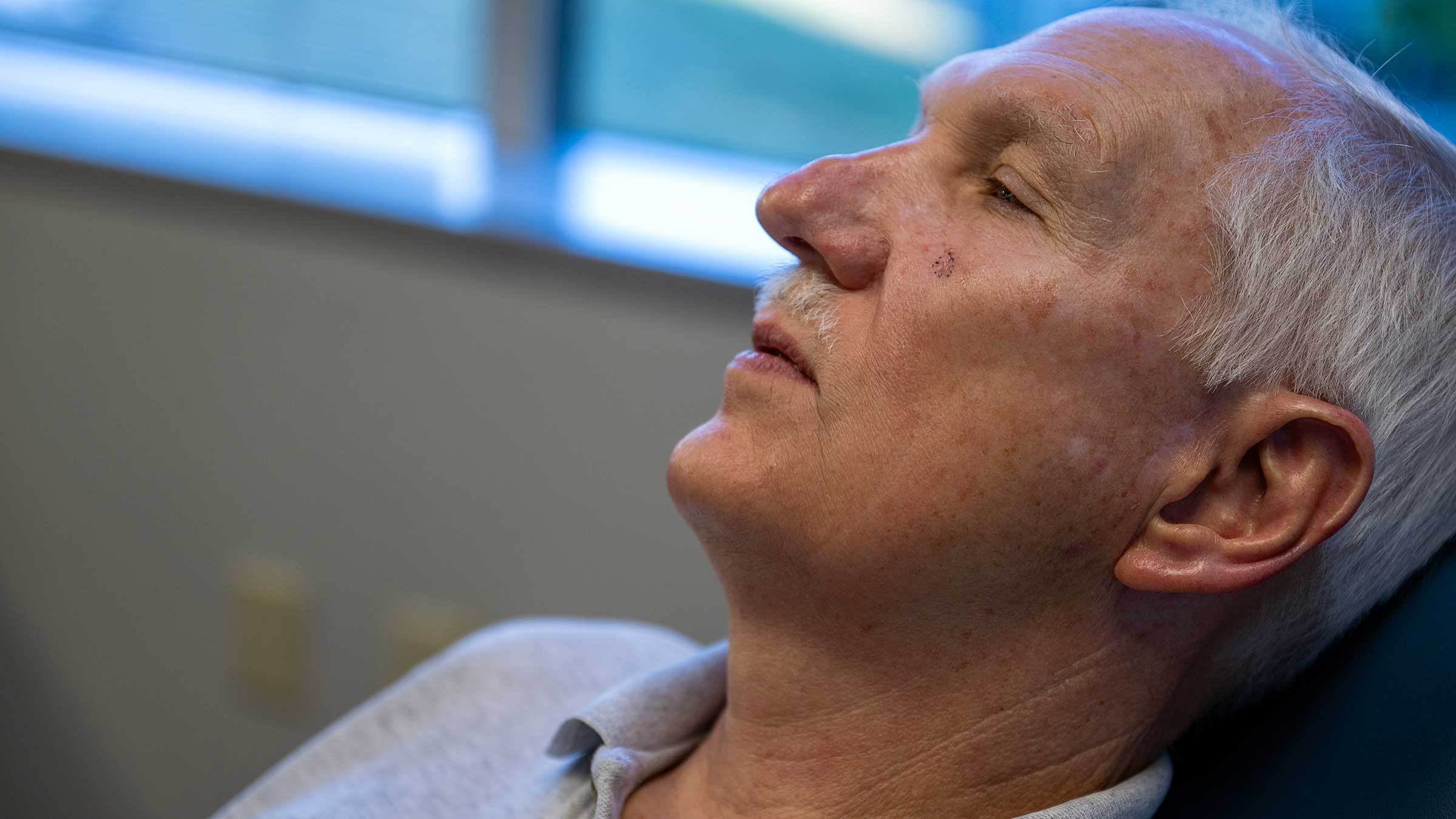
For John, 77, this is his latest Mohs procedure.
For decades, he drove a work van with the window down as the sun shined on him.
All his skin cancer lesions are found on the left side of his face — the driver’s side.
“That’s the unique thing about it is you can’t really tell,” John says of his prior surgeries with Dr. Carr. “You can’t tell what was there.”
Dr. Carr, who completes more than 1,500 Mohs micrographic procedures each year, can perform large facial reconstructions or handle minor removals. That’s part of the artistry.
“We’re here to not only make sure that that tumor goes away and that it doesn’t come back, but we also have the specialty training to be able to do the reconstruction and to get them back and to a really good place where they look good and feel good,” Dr. Carr says. “Another advantage? Most of the time it happens all on the same day.”
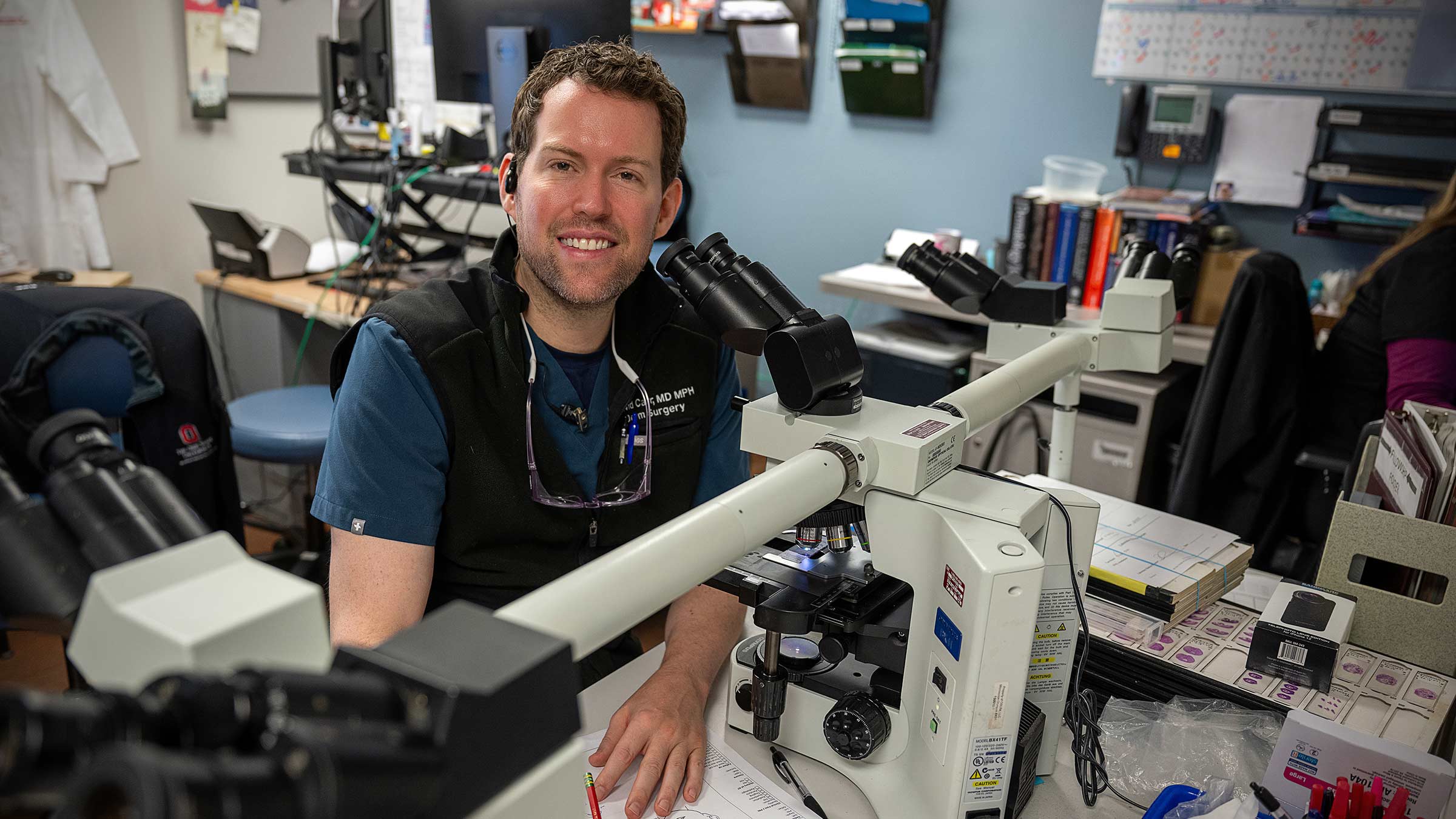
The Mohs technique requires a dermatologist to have specialized training that borrows skills from surgical oncology, pathology and reconstructive surgery.
“It’s a very artistic sort of side to medicine that is really gratifying,” he says.
A growing number of skin cancer cases
Skin cancer is the most common form of cancer.
“On a national level, we know that the incidence rate of skin cancer is increasing,” Dr. Carr says.
One in five people are expected to develop skin cancer in their lifetime.
There are several reasons why dermatologists may be seeing an increase in cases:
- Improved screening tools are catching more cases.
- People are getting an increased amount of UV exposure.
- Some medications, such as immunosuppressive medications, may make people more susceptible to developing skin cancers.
Mohs surgery offers unmatched outcomes for skin cancers
The Mohs technique to remove skin cancer was developed in the late 1960s and early 1970s and became more widespread by the 1990s.
It’s used to remove mostly basal cell and squamous cell skin cancers — the most common forms of skin cancer — from the head and neck area but is sometimes used to treat rare forms of skin cancer.
Dr. Carr is one of three surgeons who specialize in Mohs at the Ohio State Wexner Medical Center. All are fellowship trained, meaning they received additional training after completing their dermatology degrees to learn the complex techniques required for Mohs. Their expertise is why Ohio State is one of the largest regional referral centers for the procedure.
For patients, Mohs gives them the opportunity to have as much healthy tissue as possible preserved. And the cure rate is impressive: 99% of skin cancer that hasn’t been treated before is cured with Mohs.
“We have recurrence rates probably in the 1% to 2% range, whereas for standard removal, they’re in about the 5% to 7% range,” Dr. Carr says. “The reason for the difference in recurrence rates is because the Mohs technique evaluates 100% of the margin under the microscope.”

Peeling back the layers of Mohs skin cancer removal
Mohs skin cancer removal is exacting work.
Dr. Carr begins by removing a thin layer of the cancerous lesion, which are then processed in a nearby lab before they’re mounted on slides. Under a microscope, Dr. Carr carefully reviews the layers of skin from top to bottom to see if cancer cells remain.
Mohs procedure step-by-step
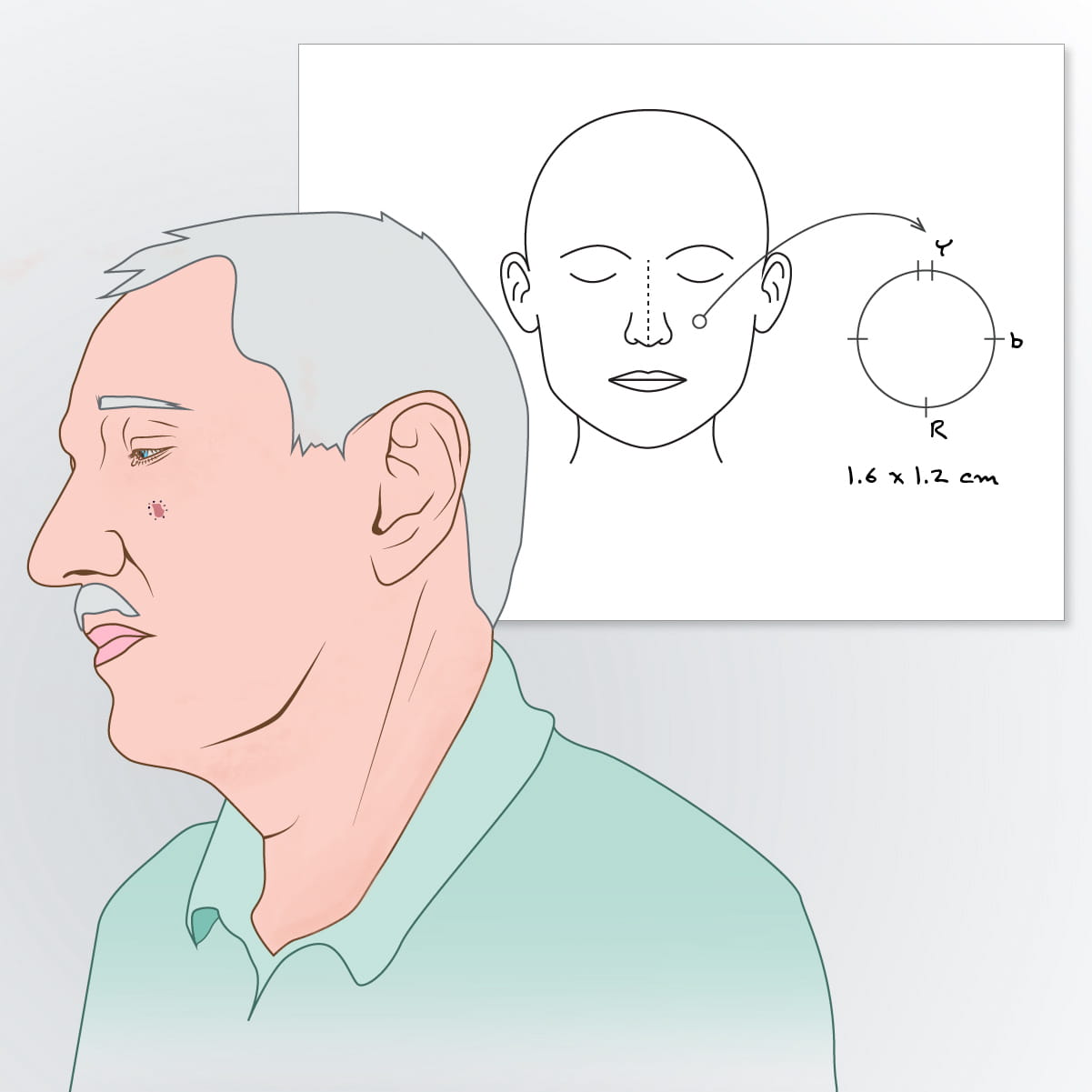
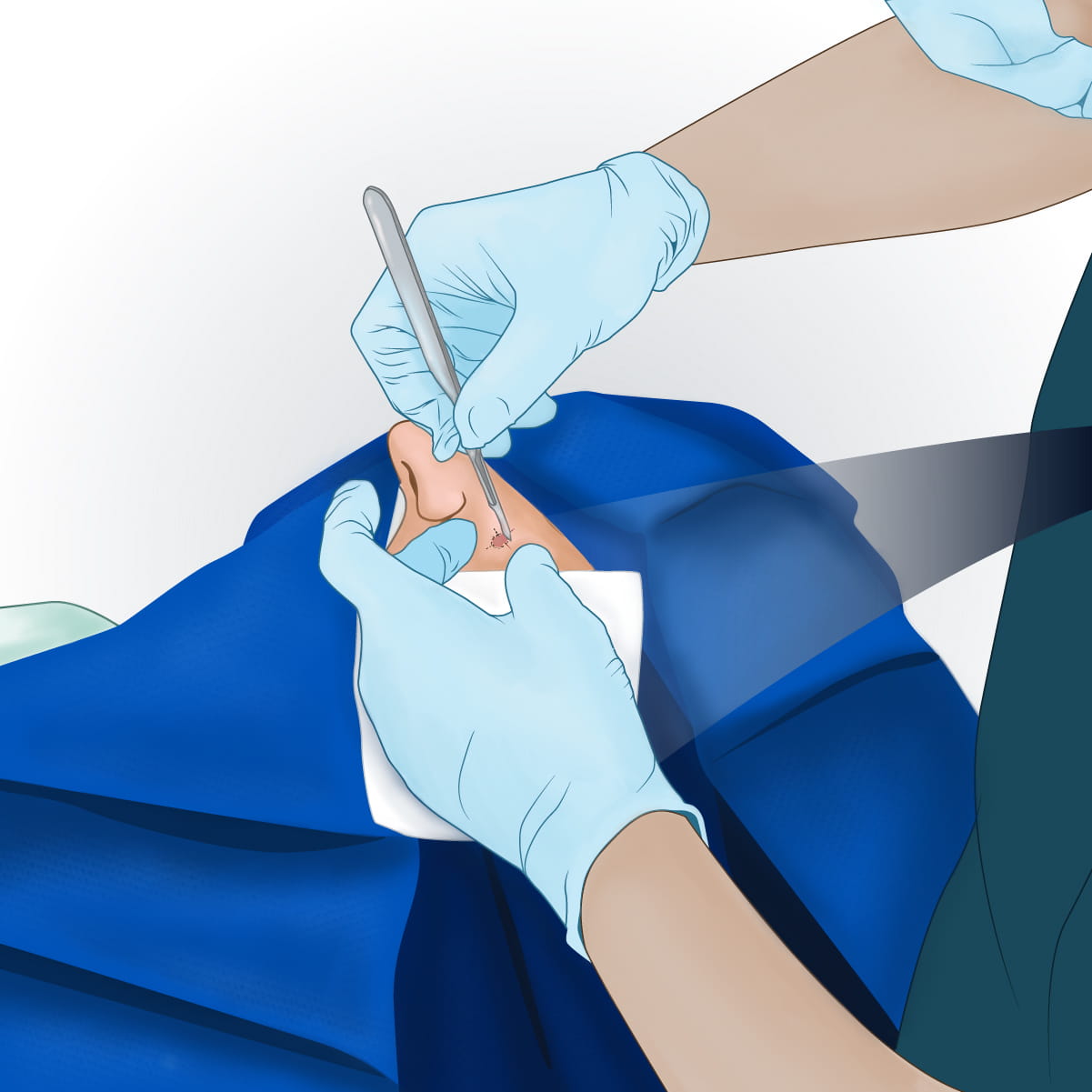
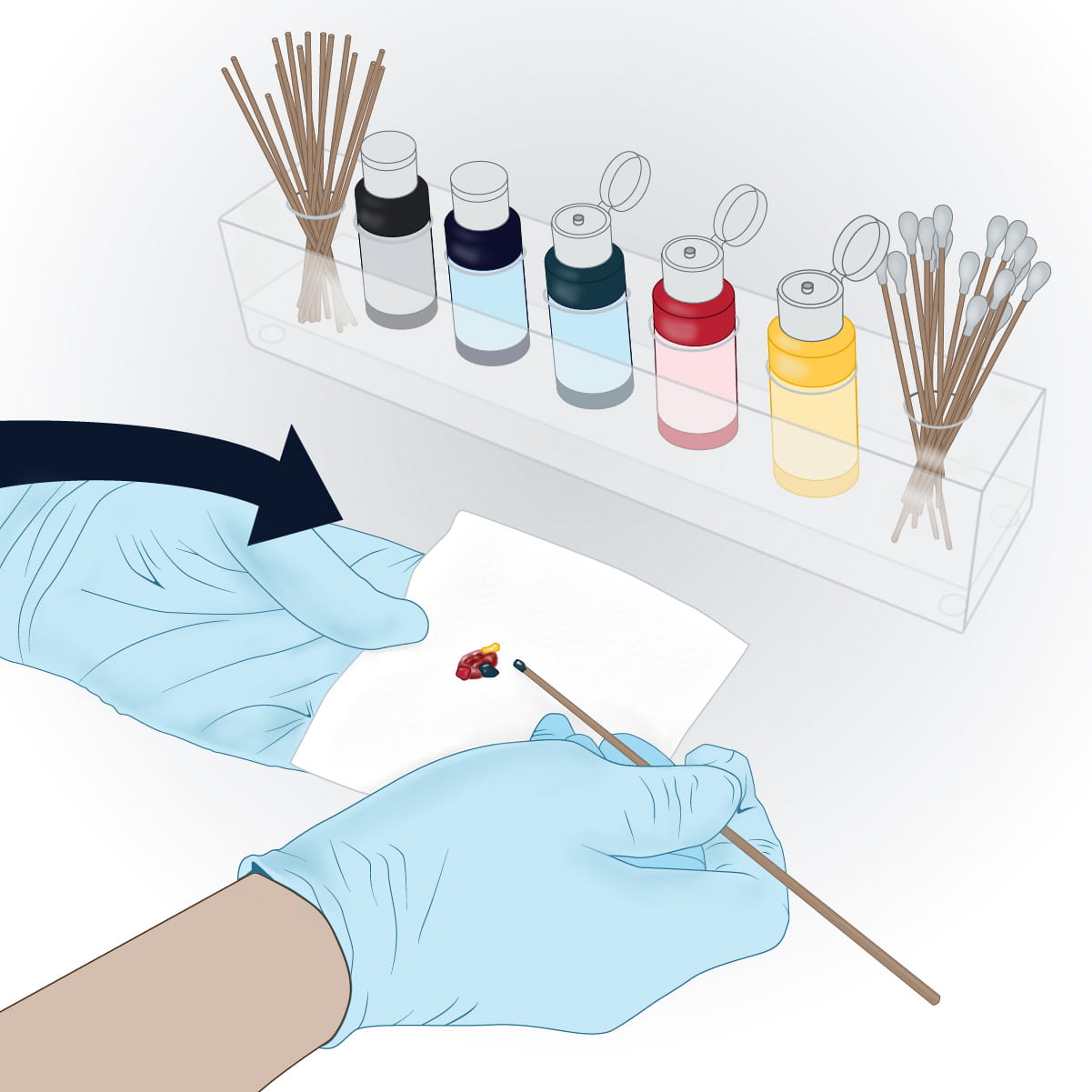

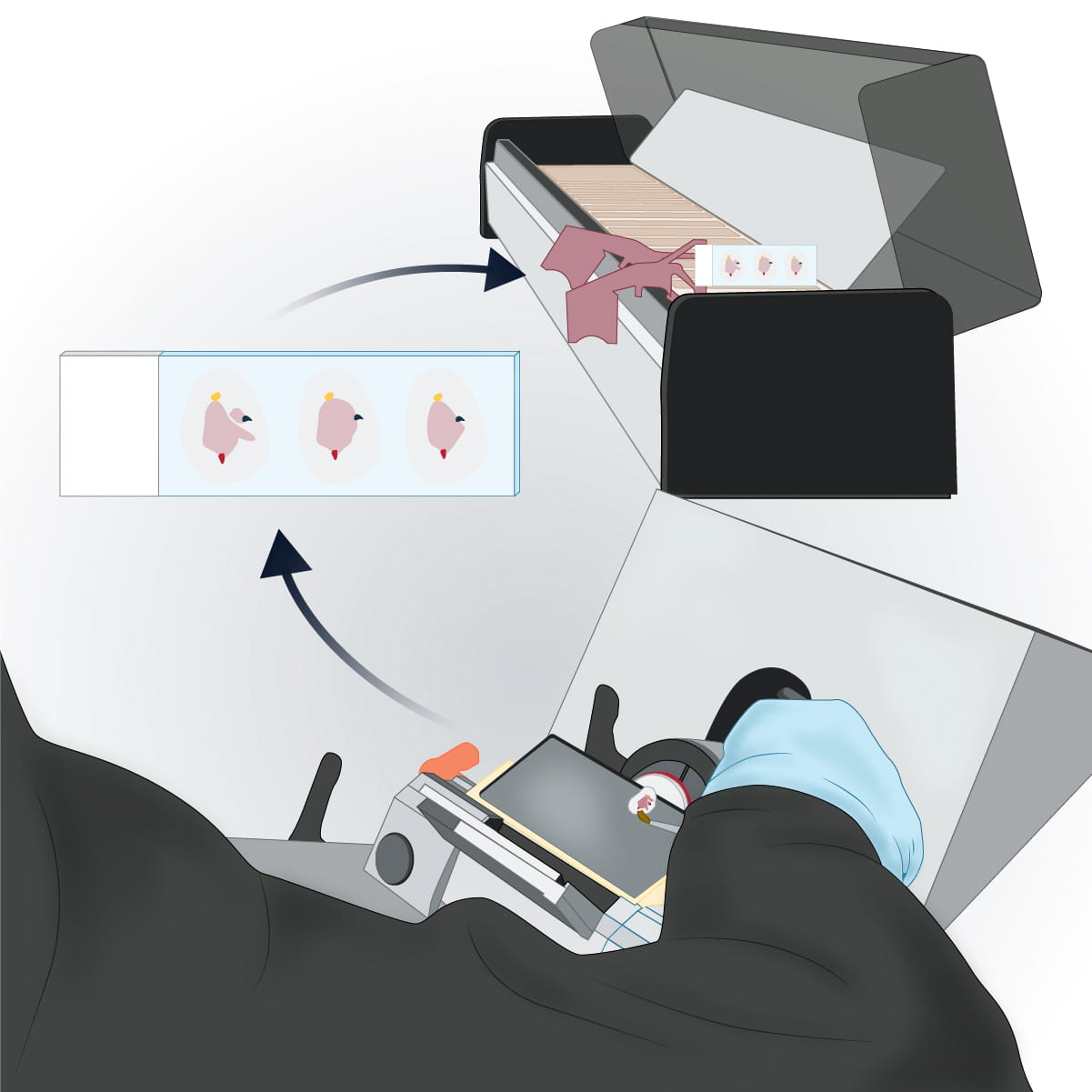
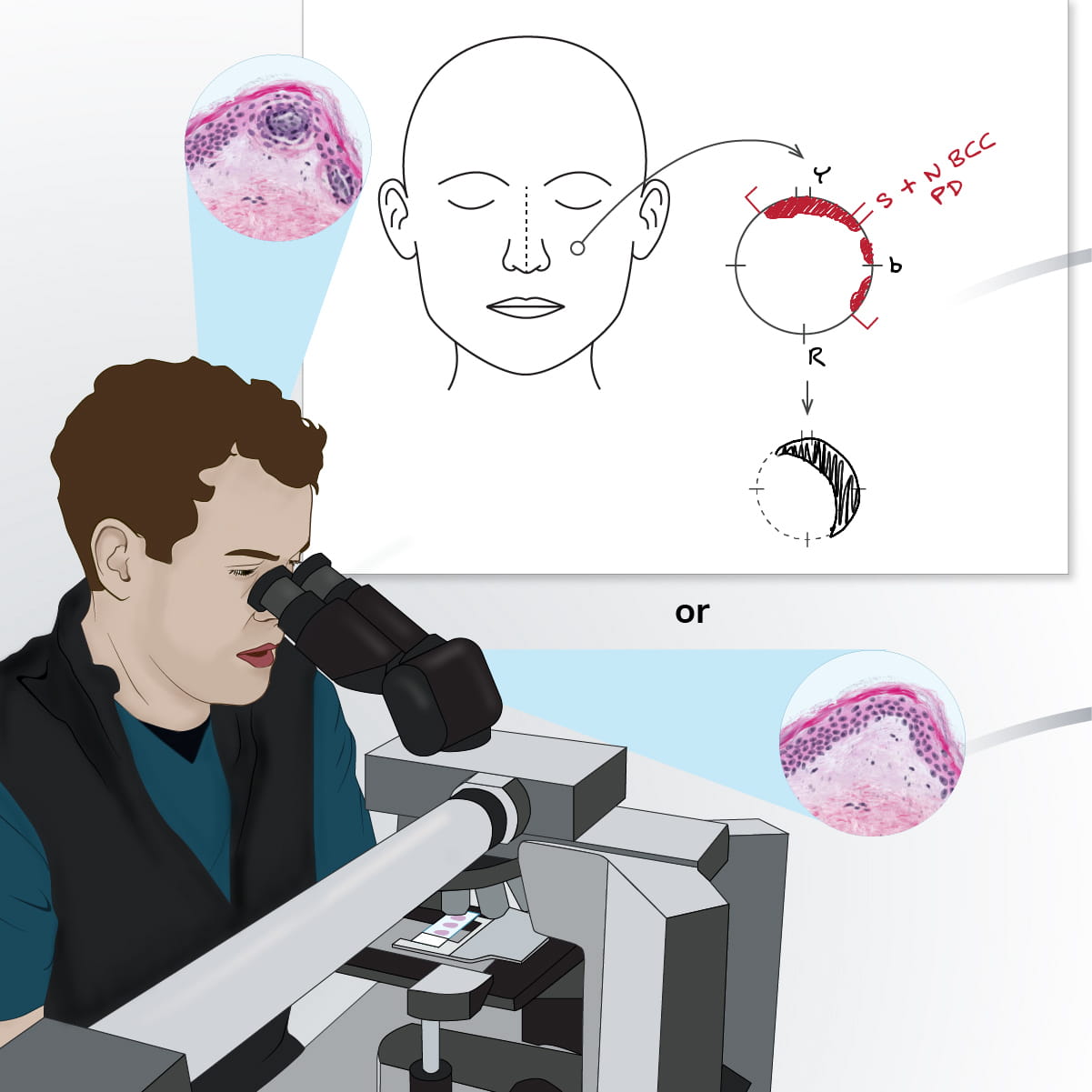

(Bottom) If no cancerous cells are present, the physician and patient choose the best method for healing.
“It takes about half an hour to process, and then we read it underneath the microscope. If it's positive, we mark where it’s positive on our map,” he says, showing the diagram of a patient’s face.
“The real beauty of Mohs is that these skin cancers grow as a unit. That allows us to trace out the tumor using this method. What we really need to look at is that full piece of marginal tissue,” Dr. Carr says.
If there are still cancer cells found, Dr. Carr can go back to the patient and take another piece of skin only from the affected area.
“Everything is mapped out in the patient’s body and then we can go back if we have to take more,” he says. “We know right where to take it.”
The process repeats until there is no more skin cancer found.
Team-based care offers extra advantages to Mohs patients
Dr. Carr often performs about seven to eight removals on surgical days. He knows most of his patients.
“You keep your patients for a long time,” he says.
For patients who have advanced or complex tumor cases, they may be put for review at what’s known as a “tumor board,” a group of doctors from various cancer specialties at The Ohio State University Comprehensive Cancer Center – Arthur G. James Cancer Hospital and Richard J. Solove Research Institute, including surgical oncology, radiation oncology and dermatopathology.
“We can have everybody in the same room talking about care for our more advanced cases,” Dr. Carr says.
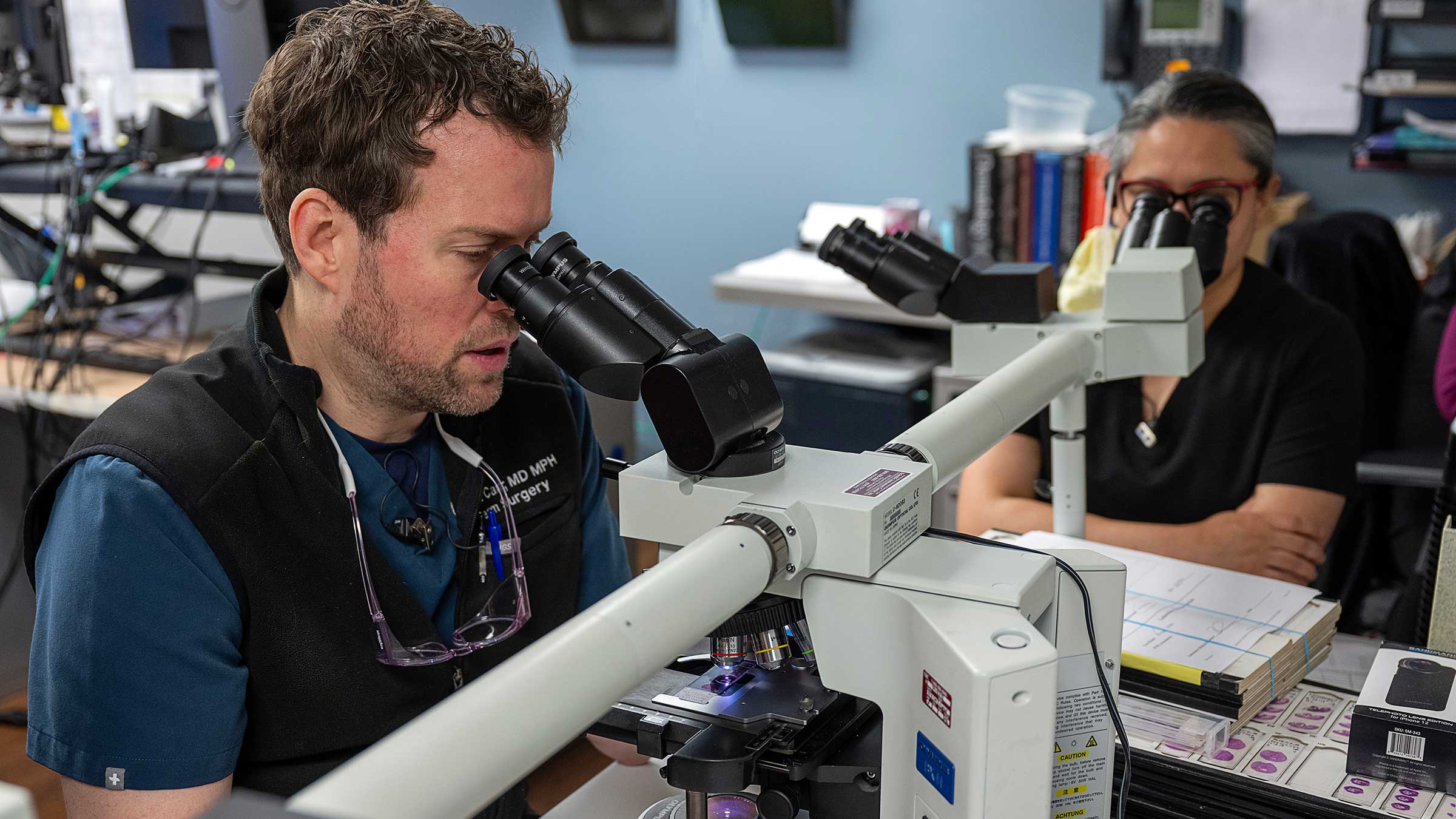
Together, the doctors debate the best course of action.
“In some cases, there are gray areas and that’s why you have to talk through the studies and come to the conclusion of what's best for that patient,” Dr. Carr says. “It is an amazing resource to have available.”
Examining outcome-based research
For most cancers, a patient’s diagnosis is logged in a large database through the National Cancer Institute (part of the National Institutes of Health). This database helps scientists and physicians study and conduct research that informs treatment guidelines. But skin cancer cases are an exception.
Dr. Carr has been working to change that.
At Ohio State, he has worked to create a database with about 2,350 squamous cell tumors. And Ohio State recently joined a large consortium of 12 other academic medical centers, based in three countries, where more than 23,000 skin cancer cases are combined into a database for research into skin cancers.
“When we see a tumor and say, ‘How bad is this? How worried do we have to be?’ the database is going to help us know what groups are at higher risk. It’s going to help us know how to better treat these patients. What’s the right treatment for a specific type of skin cancer?” Dr. Carr says.
“It’s going to help us in a multitude of ways, and we just never had these kinds of numbers before,” he says. “It’s really exciting.”
Paying forward the lessons of skin cancer
For John Komives’ latest Mohs procedure, Dr. Carr had to take numerous swaths of skin to remove all the cancer. John has an incision on his face that’s about two inches long.
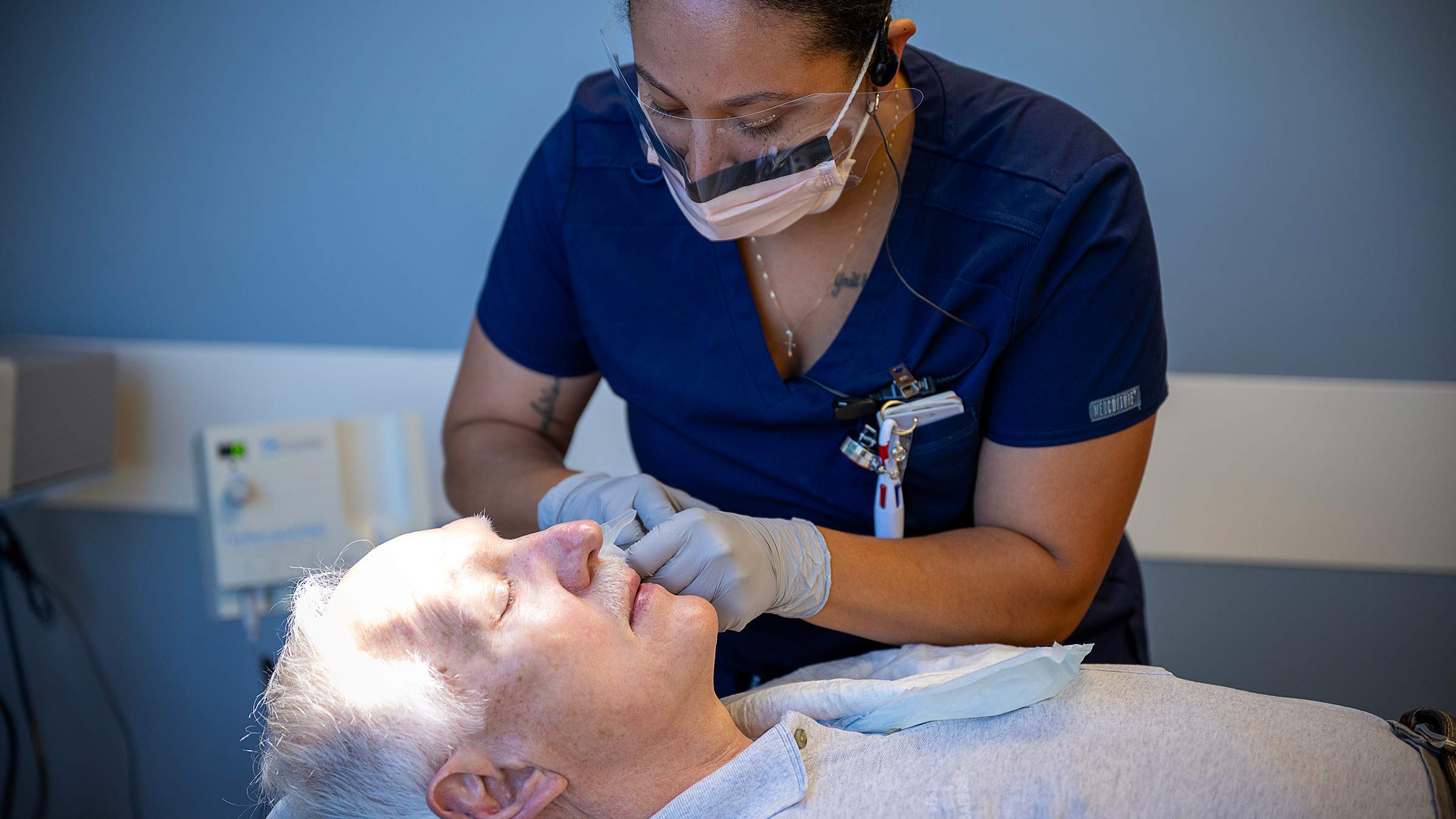
He’s a few weeks out from the removal, and still applying petroleum jelly on the incision as it heals.
“They numb everything up and it’s no big deal,” John says. “In most cases, they put the bandage on the incision, and I go right back to work.”
John encourages everyone he knows to wear sunscreen.
“I tell people: Put something on your skin,” he says.

Worried about your skin?
Ohio State's dermatology team provides comprehensive care backed by one of the nation's leading academic health centers.
Expert care starts here



